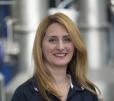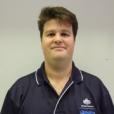
Diversity, Equity, Inclusion and Belonging
At ANSTO we understand that diverse teams produce better outcomes – and we value the merit that a diverse perspective can bring to the quality and outcomes of our work, and the way we get the job done.

Showing 1161 - 1180 of 1329 results

At ANSTO we understand that diverse teams produce better outcomes – and we value the merit that a diverse perspective can bring to the quality and outcomes of our work, and the way we get the job done.

Oksana is part of the ANSTO graduate development program. Currently, she is working in the radioisotope research and development team, investigating separation techniques for isotope production.

Dr. Liza McDonough is an early career researcher with expertise in groundwater chemistry. She is employed as a Researcher at ANSTO and splits her time between speleothem palaeoenvironment and Antarctic hydrology research. Dr.
MABI instrument can determine both the concentration and source of black carbon pollution in the atmosphere.
Two approaches use existing low cost and low energy technologies to reuse stockpiled waste from mining operations - capturing carbon dioxide in the form of valuable carbonate minerals.
The first experimental evidence to validate a newly published universal law that provides insights into the complex energy states for liquids has been found using an advanced nuclear technique at ANSTO.
Combined imaging approach characterises plaques associated with disease.
ANSTO’s OPAL multi-purpose research reactor at Lucas Heights has officially returned to power and recommenced operations, following a months-long planned shutdown to carry out essential maintenance and upgrades.


As a Senior Principal Research Scientist, Henk is participating in several projects applying nuclear techniques to better understand climate changes of the past.






Amit Saha is a software engineer and author. He currently works for Atlassian in Sydney, Australia and has in the past worked for various companies including Red Hat and Sun Microsystems.

Bryce has a practical background in control systems spanning 25 years.
Study helps make carbon dating a more accurate chronological tool.